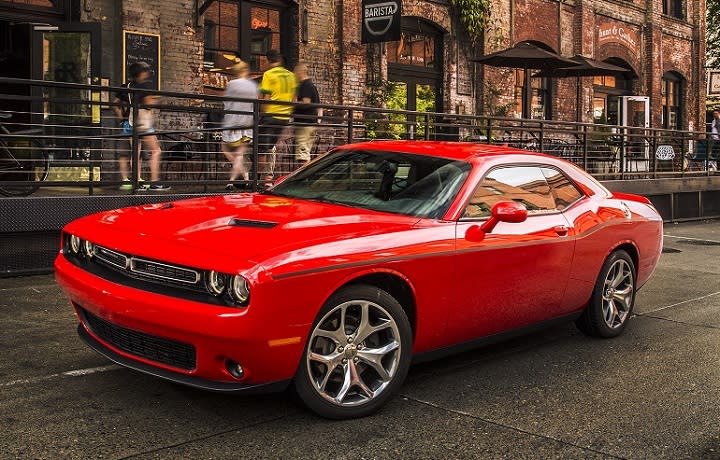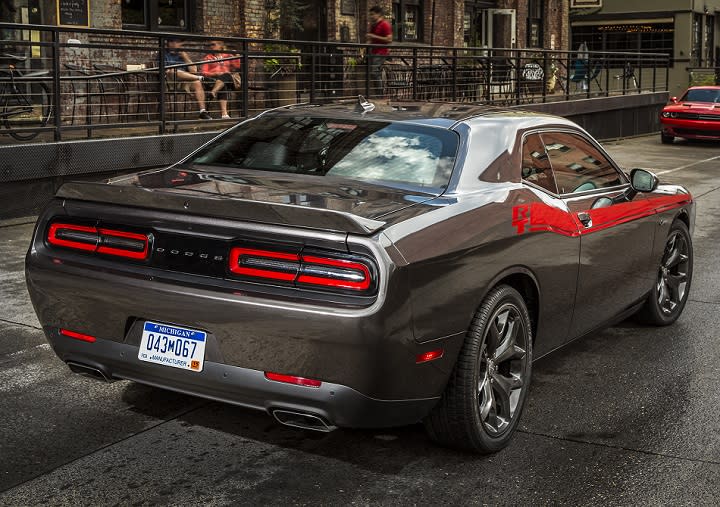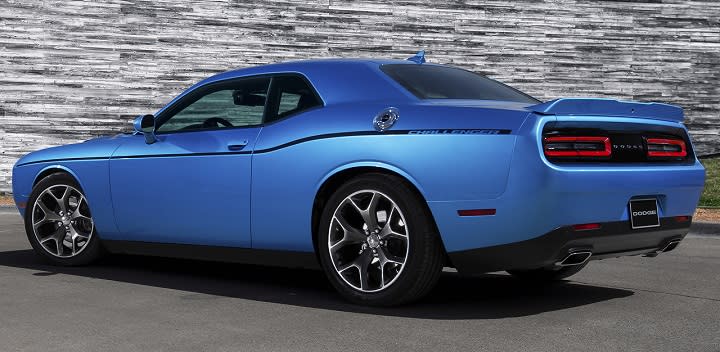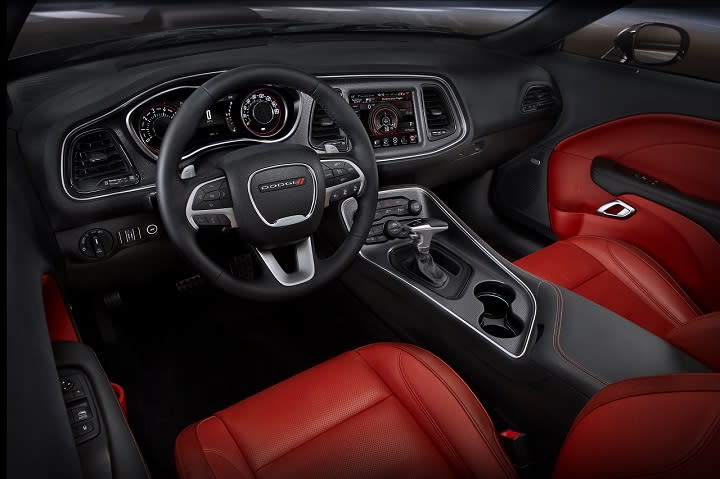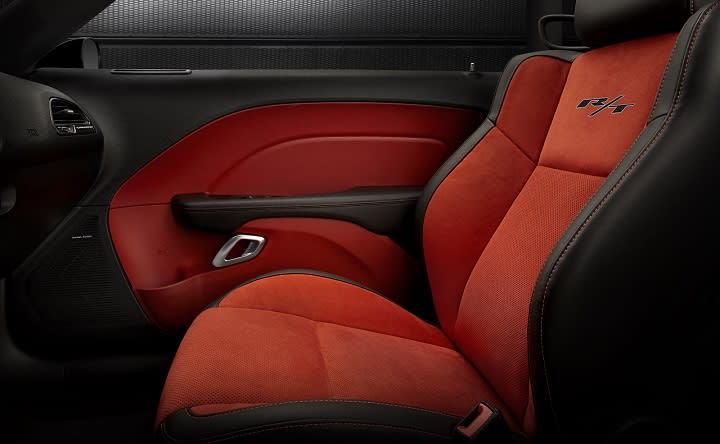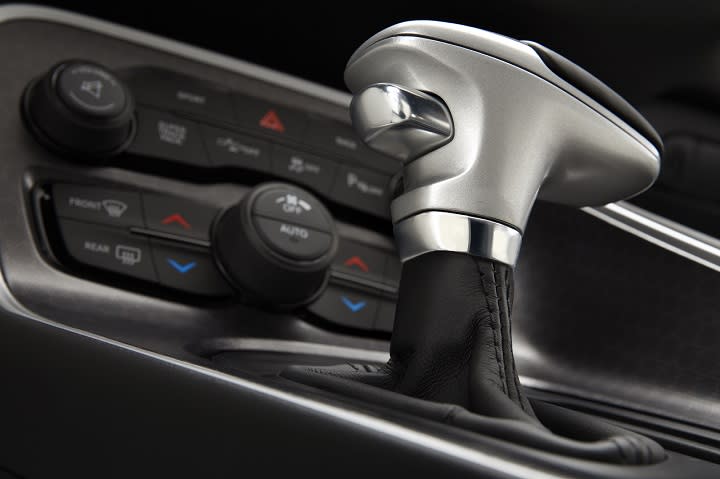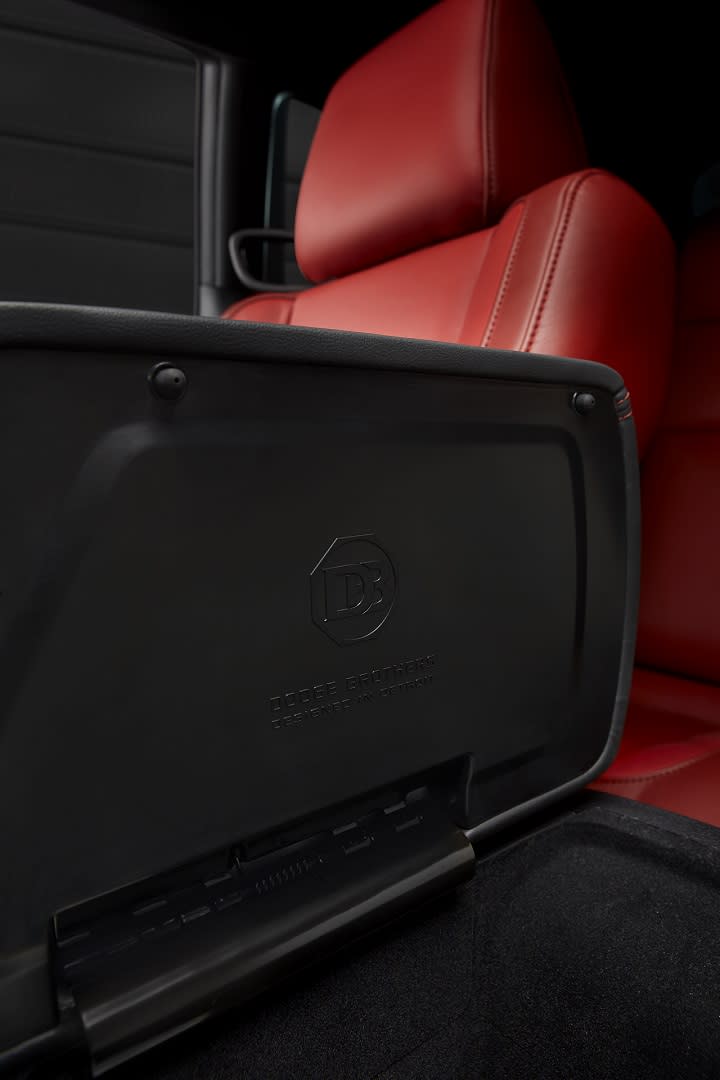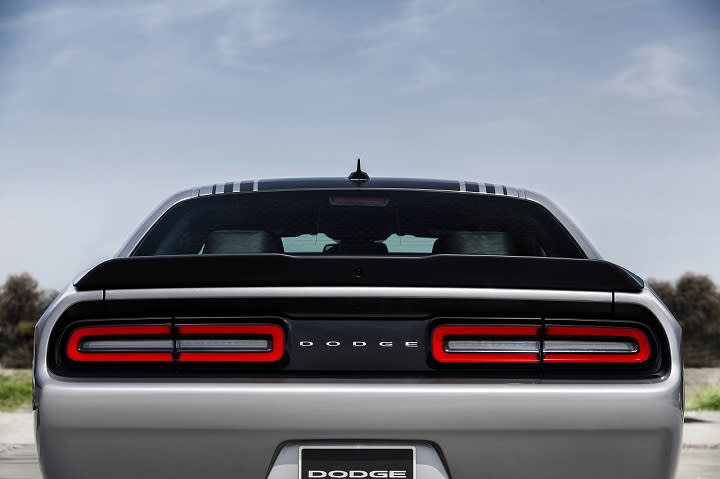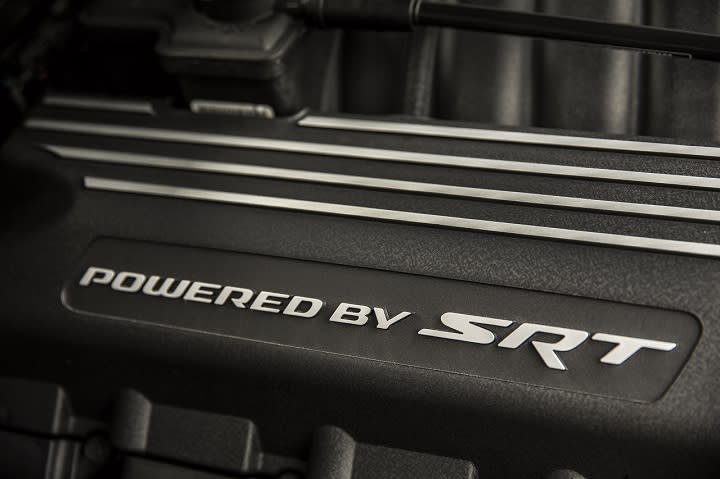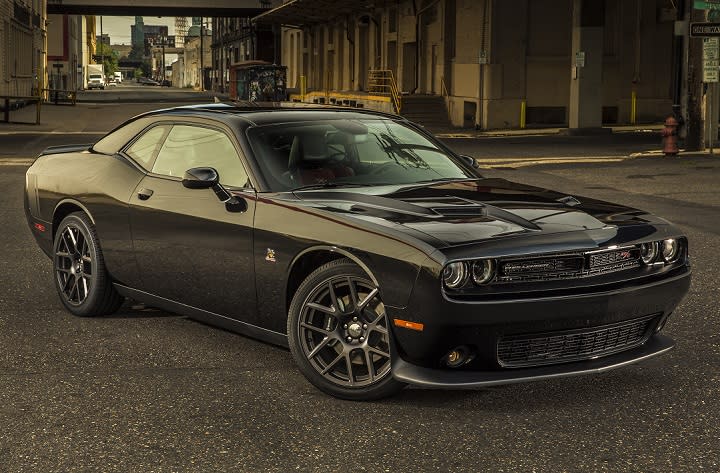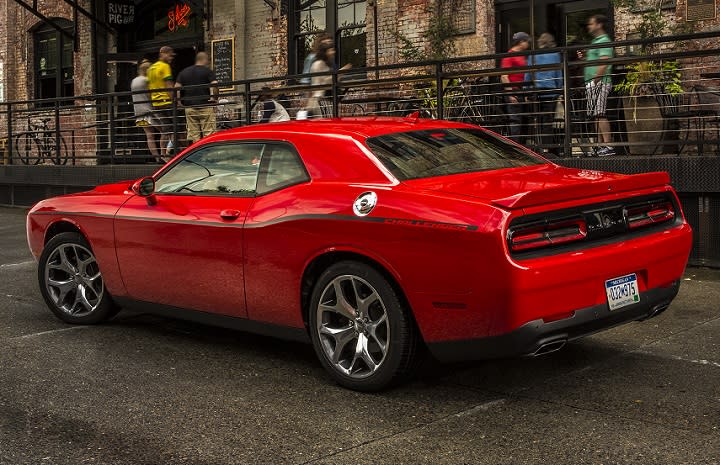PowerSteering: 2016 Dodge Challenger Review
Body Style:
Abstract:
Dodge reintroduced the retro-styled Challenger in 2008, and while this midsize coupe has enjoyed a steady program of improvement over the years, it is essentially the same car that debuted nearly a decade ago. Find out what our expert thinks of the 2016 Dodge Challenger in this exclusive review...
Year:
2 016
2016 Dodge Challenger SXT front quarter left photo Introduction
Dodge reintroduced the retro-styled Challenger in 2008, and while this midsize coupe has enjoyed a steady program of improvement over the years, it is essentially the same car that debuted nearly a decade ago. Underscoring the Dodge Challenger’s age, in that span of time, primary competitors have each benefitted from complete redesigns. A new Ford Mustang arrived for 2015 and a new Chevrolet Camaro launched for 2016.
Nevertheless, the 2016 Dodge Challenger supplies certain talents and traits that the Camaro and Mustang cannot match. For example, only the Dodge is offered with an engine generating 707 horsepower, and only the Dodge can carry 4 adults in comfort. Undeniably, though, both the Chevy and the Ford are more modern automobiles in terms of their underlying engineering. Plus, they both come in a convertible body style that Dodge has not matched.
For this review, we did not evaluate the 707-horsepower SRT Hellcat model, or any of the many versions of the Challenger equipped with a V-8 engine. Instead, we selected the affordable V-6 model—a Challenger SXT Plus equipped with the Blacktop package, Super Track Pak, Driver Convenience group, an Alpine premium sound system, navigation system, and high-performance brake pads. The price came to $35,210, including the $995 destination charge.2016 Dodge Challenger R/T Plus with R/T Classic package rear quarter right photo What Owners Say
Before we discuss the results of our evaluation of the 2016 Challenger, it is helpful to understand who buys this car and what they like most and least about it.
Compared with the Midsize Sporty Car segment, Dodge Challenger buyers are more often men (86% vs. 81% for the segment), and while the median owner age is the same at 51 years, more Challenger buyers are concentrated within the Boomer (born 1946-1964 and Gen X (1965-1976) demographics than the segment averages. Annual median household income is essentially identical, with the Challenger buyer’s $106,395 yearly take amounting to $57 more than the segment average.
As far as sentiments about car selection are concerned, a slightly greater percentage of Challenger buyers agree that they prefer to buy a vehicle from a domestic company, compared with the segment average (86% vs. 81%, respectively). Perhaps they do not realize that Dodge is a part of London-based Fiat Chrysler Automobiles, despite 50% of Challenger owners strongly agreeing that family and friends think of them as someone who knows a great deal about autos, compared with 45% for the segment.
Challenger owners also indicate that fuel economy is a lesser concern than the segment average, with only 26% agreeing that it is their first consideration when choosing a new vehicle, compared with 31% for the segment. Additionally, just 27% of Challenger buyers indicate a willingness to pay more for a vehicle that is environmentally friendly, compared with 34% for the segment.
J.D. Power research also shows that performance and design are important to Challenger buyers, 88% of whom strongly agree that they like a vehicle that offers responsive handling and powerful acceleration, compared with 83% of buyers in the segment. Additionally, 78% strongly agree that they like a vehicle that stands out from the crowd, compared with 69% for the segment. Naturally, 66% of new Challenger buyers strongly disagree that a vehicle is just a way of getting from place to place, compared with 61% for the segment.
Buyers say that their favorite things about the Challenger are (in descending order) the engine/transmission, exterior styling, interior design, driving dynamics, and the seats. Buyers indicate that their least favorite things about the Challenger are (in descending order) fuel economy, visibility and safety, storage and space, the infotainment system, and the climate control system.2016 Dodge Challenger SXT side profile photo What Our Expert Says
In the sections that follow, our expert provides his own assessment of how the 2016 Challenger performs in each of the 10 categories that comprise the J.D. Power 2016 U.S. Automotive Performance, Execution and Layout (APEAL) Study.SM
Exterior
The Dodge Challenger looks like an old car. One reason is that it is purposely styled to resemble early 1970s iterations of the iconic muscle car. Another reason is that the current Challenger has been around for almost a decade, and aside from a subtle styling refresh, various paint color and tape stripe changes, and an array of wheel designs that have evolved over the years, it basically looks the same as it did in 2008.
Given the Challenger’s mission to hearken back to the good ‘ol days, there is nothing wrong with this approach. In fact, of the three iconic American sports coupes, each of which drew upon historical styling details beginning with the arrival of the 2005 Ford Mustang, it was the Challenger that most faithfully mimicked the original.
If anything deserves change here, it would be a redesign of the car’s door handles. It is very easy to lose your grip when opening the door.2016 Dodge Challenger SXT Plus interior photo Interior
The retro design theme carries into the Challenger’s driver-centric interior, though Dodge does supply an array of modern technologies for this car. Take a look around and it is clear that the Challenger dips into the same parts bin as the Chrysler 300 and Dodge Charger, the two sedans that are built on a stretched version of this coupe’s platform.
Materials are of decent quality, the only egregiously cheap feeling parts amounting to the stalk controlling the turn signals and wipers and the plastic on the glove box door. Still, there is a lack of sophistication with respect to how they are assembled, from the seam between the fabric-wrapped windshield pillars and the headliner to the flimsy flexibility of the door panels.
Depending on the trim level, Dodge offers two-tone red/black and off-white/black interior treatments, and they certainly dress up the otherwise dark cabin.2016 Dodge Challenger R/T Classic front seat photo Seats
A wide car with lots of front-seat space, the Challenger provides a much more comfortable cabin than its direct competitors. Plus, because this is a relatively tall car with chair-like seating, it is also easier to get into and out of, an important consideration if you’re heavier or suffering from leg or back pain.
Dodge says the test Challenger includes “sport seats,” but they were fairly broad and flat. When taking corners at speed, the driver is forced to anchor their body by holding tight to the steering wheel, which gets tiring. However, the seats are comfortable, and in SXT Plus trim they’re heated, ventilated, and wrapped in premium Nappa leather, nice details at the price point.
One of the Challenger’s major selling points is that it can legitimately transport 4 adults, or even 5 for a short trip. Try that in a Camaro or Mustang. While this is tougher to do when tall people are sitting in front, I was able to tuck my 33-in. inseam legs into the allotted space if I moved the driver’s seat forward a bit. Also, Dodge makes it easy to load passengers with a tip-and-slide front passenger seat.2016 Dodge Challenger SXT gear selector and climate control system photo Climate Control System/Infotainment System
Climate Control System
On a warm August afternoon, after the Challenger had been sitting in California sunlight for the day, the climate control system had no trouble rapidly cooling the interior. The ventilated seats sure helped in this respect, especially since the driver’s seat had taken the brunt of the direct sunlight while parked. Also, Dodge provides air conditioning vents for the rear-seat passengers.
The climate controls are mounted low on the center part of the dashboard, tucked behind the shifter. This location is a concession to style, one that makes sense in a vehicle like this. Fan speed adjustment gets a large knob, but given that the test car had an automatic climate control system, it would be terrific if knobs were also offered for the temperature adjustments.
Infotainment System
Not long ago, Dodge’s Uconnect 8.4 touch-screen infotainment system provided one of the largest, most graphically appealing and responsive touch-screen displays in the industry. However, though Dodge has regularly updated the system, it is starting to lag behind in terms of the latest technologies and its appearance.
For example, the screen is inset behind surrounding trim rather than flush with the dashboard surface and resembling a tablet computer. The available Wi-Fi hotspot supplies slower 3G service rather than faster 4G LTE. It also does not offer smartphone-projection technology in the form of Apple CarPlay or Android Auto.
While the system deserves such criticism, it also gets many things right. Pairing a smartphone via Bluetooth is quick and painless, and it is easy to use voice recognition to initiate a phone call. The large display supplies big virtual buttons and icons, plus a customizable menu bar at the bottom. Separate stereo volume and tuning knobs make life easier, and numerous Uconnect Apps are available.
Also, when the car is equipped with the Super Track Pak, Uconnect supplies in-depth Performance Pages and Dodge Performance Control vehicle setup screens. You can record acceleration, cornering, and braking data, monitor lap times, employ the car’s Launch Control system, and more. Yes, even when the Challenger has a V-6 engine.2016 Dodge Challenger SXT center console armrest storage photo Storage and Space
Storage is plentiful within the Challenger’s large glove box and decently sized center console storage bin. Otherwise, Dodge provides little more than a center console side net, small trays in the door panel armrests, and a slot to the right of the shifter that cannot hold a modern smartphone.
Trunk space is generous, measuring 16.2 cu. ft., which is more than many midsize sedans. Access is difficult, though, making it harder to load heavy pieces of luggage, and there is no internal grab handle with which to close the lid without getting your fingers dirty. A 60/40 split-folding rear seat helps to expand the space.2016 Dodge Challenger SXT rear photo Visibility and Safety
Thick windshield pillars, thicker rear roof pillars, restricted glass area, and small side mirrors can make seeing out of the Challenger a challenge. A reversing camera is a huge help when backing up, and an available blind-spot monitoring system with rear cross-traffic alert makes for safer lane changes.
Additional driver-assistance and collision-avoidance technologies include an adaptive cruise control system and a forward-collision warning system. An automatic emergency braking system sure would be nice, but Dodge doesn’t offer one for the Challenger.
That’s too bad, because the single most significant argument against purchasing this car has to do with its crash-test ratings. The Insurance Institute for Highway Safety (IIHS) gave the Challenger a “Marginal” rating for small overlap frontal-impact protection, and merely “Acceptable” ratings for roof strength and the effectiveness of the head restraints and seats at limiting injury. Both the Camaro and the Mustang scored higher, though of the trio only the Mustang earns a “Good” rating for roof strength.2016 Dodge Challenger R/T Scat Pack engine photo Engine/Transmission/Fuel Economy
Engine/Transmission
Generating 305 horsepower and 268 lb.-ft. of torque, the Challenger’s standard 3.6-liter V-6 engine is no slouch. While it cannot match the thrust and bellow of the V-8 engines offered in other Challenger trim levels, the V-6 nevertheless supplies satisfactory acceleration.
An 8-speed automatic transmission does a good job of finding the right gear at the right time, assisted by available paddle shifters as it powers the rear wheels. The transmission uses an electronic shifter, but one that closely mimics the operation of a traditional cable-actuated PRNDL. In this respect, it serves as a model for the industry.
When driving the Challenger with enthusiasm in the mountains, I did not miss the V-8 engine. On a drag strip or when a menacing rumble while idling through a crowd is desirable, then yes, settling for the V-6 is like taking a cold shower. But when threading a canyon the SXT’s superior 52/48 front-to-rear weight distribution (the V-6 is lighter) combined with the Super Track Pak’s hardware upgrades makes the weaker Challenger feel lighter on its feet.
Fuel Economy
According to Challenger buyers, fuel economy is by far the least appealing thing about the car. That makes sense. If you have a V-8 engine, you’re going to want to use it from time to time. And when you use it, it is going to use fuel.
If this is going to be a big deal, consider the spirited but not muscular Challenger SXT. The EPA set an expectation of 23 mpg in combined driving, and I got 21.9 mpg on the test loop. Note, however, that construction had closed a part of the loop, and the detour resulted in additional driving in the mountains.2016 Dodge Challenger R/T Scat Pack front quarter right photo Driving Dynamics
With a design that is now almost a decade old, and with a platform that can trace its roots back at least 15 years, driving a new Dodge Challenger is like piloting a restomod version of an original 1971 version. It looks ancient. Structurally it feels pretty old. But the mechanicals provide modern driving dynamics.
On city streets and tight canyon roads, the Challenger feels big, wide, and hard to place given the restricted visibility. Nevertheless, with the Super Track Pak’s big 20-in. wheels, summer performance tires, revised rear axle ratio, performance steering, performance suspension, and paddle shifters, it has no trouble whipping through tight sets of twisties—the driver just needs to take extra care with the Challenger’s girth.
High-performance brake pads are a worthy upgrade given their paltry cost, and they really bring the big coupe down from speed in a hurry. Note that on testing day, early morning temperatures hovered in the mid-60s, so it is not surprising that they did not fade. Steering is fairly slow but isn’t sloppy, and there are three assist level settings from which to choose: comfort, normal, and sport.
This car is happiest on the highway and traveling roads with gentle bends, though the test car’s performance-tuned underpinnings proved rather stiff, giving the car an occasionally choppy ride. Still, the upgraded suspension does a fine job of managing sharp bumps and body motions over whoops and dips. Structurally, though, the Challenger feels increasingly flaccid, compared with the competition.
Notably, Dodge offers the Super Track Pak on the least expensive Challenger SXT with cloth seats and basic equipment, meaning that all of these performance upgrades are available for a minimal amount of money.2016 Dodge Challenger SXT Plus rear quarter left photo Final Impressions
Though the Dodge Challenger is an old car, and not just in terms of its overall design themes, it ranks higher in terms of its overall appeal than the Ford Mustang, according to the 2016 U.S. APEAL Study. Obviously, Dodge is doing something right with the Challenger.
Strip emotion out of the equation, though, and this big Dodge’s advancing age is evident in its structural deficiencies and increasingly outdated technologies.
Does this matter in a car that is all about stoking the fires of nostalgia? Not one bit, especially when packaged with 707 horsepower, or when priced at $27,990 to start.
Fiat Chrysler Automobiles supplied the vehicle used for this 2016 Dodge Challenger review.
For more information about our test driver and our methodology, please see our reviewer profile.
Additional Research:
Check this if this is NOT an Articles Listing Page:
New or Used:
New
Display Article Date?:
Fuel:
Article Is Flipbook:
Yes

 Yahoo Finance
Yahoo Finance 
